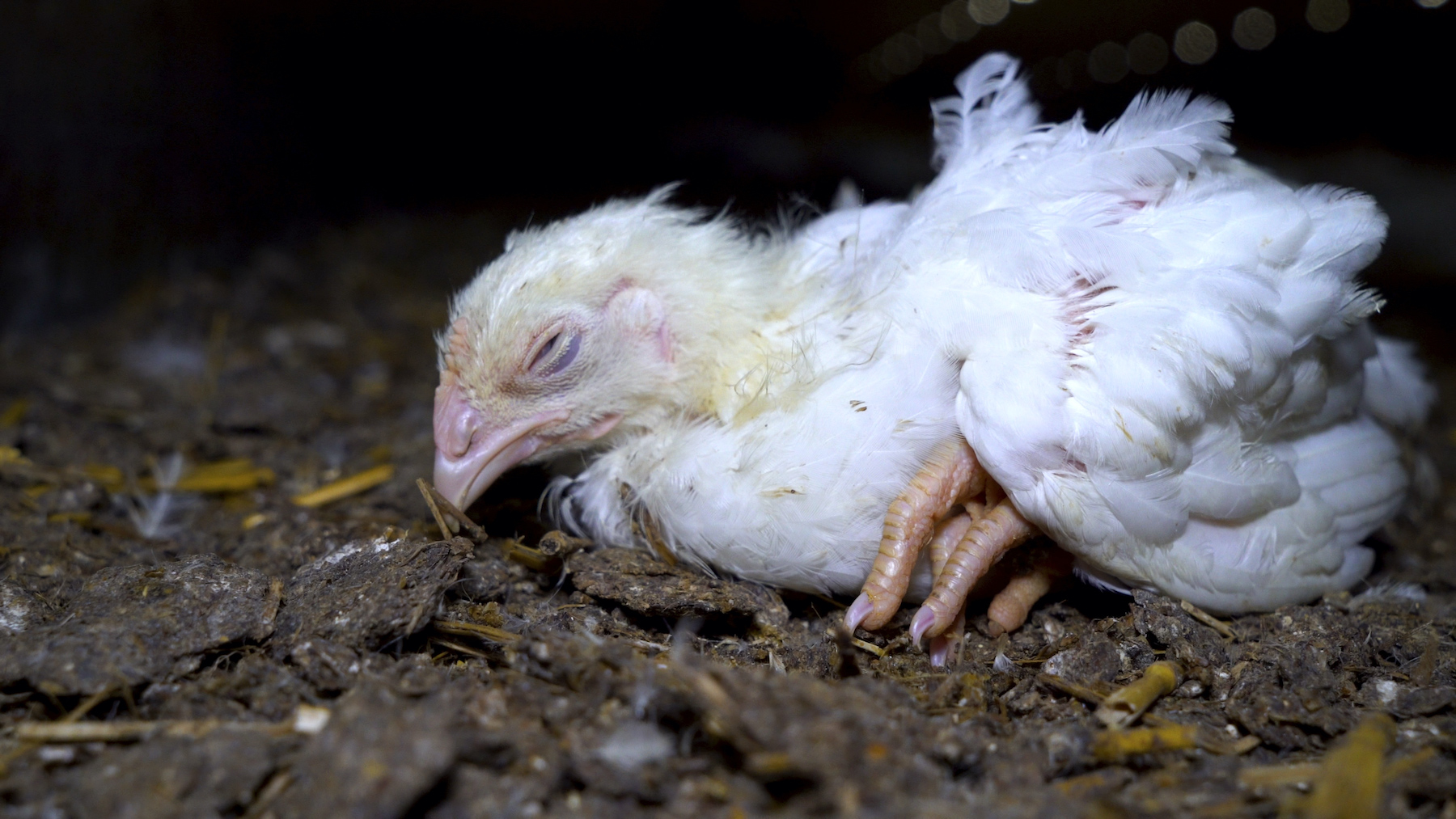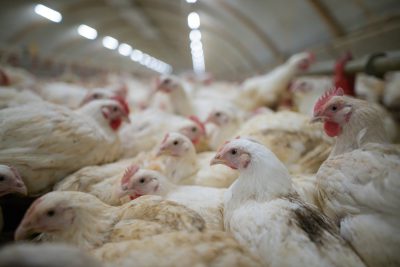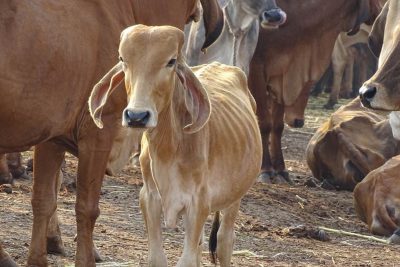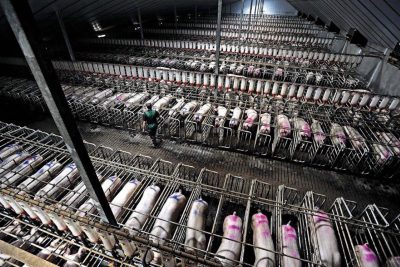From cleaning out the pens of backyard hens to consuming chicken, turkey, ducks or eggs, our relationship with poultry causes us serious illness.
Do Chickens Carry Disease Harmful To Humans?
There are many bacteria, viruses and other pathogens that live in poultry and can pass to people. Some require direct contact between people and birds, but many can be passed indirectly, or through the consumption of the birds’ flesh or eggs. Some pathogens cause nasty symptoms only in the individual exposed while others have the capacity to spread from person to person, cause global pandemics and kill millions of people.
How Do People Get Sick From Live Poultry?
Chickens, ducks and other birds commonly carry salmonella and campylobacter and it rarely makes them ill. You would not even know the birds carried these bacteria but they can be shed in their droppings or carried on their bodies and passed to the hands, shoes and clothing of those who interact with them.
Viruses
Viruses require a host in which to live and replicate. They find their way into hosts via the respiratory system, open wounds, and into their blood via insect bites. Once inside and attached, they are able to replicate. One sneeze can be all it takes for a virus to then pass from person to person.
Avian Influenza
Bird flu viruses are common in waterbirds and farmed poultry. There are several strains, the most serious of which are the H5 and H7 viruses. Because sick and stressed birds are crowded together in huge numbers inside factory farms, disease passes readily through the flock. Mild forms of influenza may go entirely unnoticed but the severe forms can kill every bird in the unit within 48 hours. Because so many animals die routinely inside farms, it can take a while to realise anything is wrong, and by then it may be too late.
Symptoms in birds may include diarrhea, coughing, discharge from the eyes and nose, swelling of the face, paralysis, and sudden death. In people, clinical signs include swelling and reddening around the eyes, fever and aches. In the worst cases, it causes the immune system to overreact and the infected person drowns as their lungs fill with fluid.
The worst avian flu pandemic to date was in 1918, when more than 50 million people around the world died, but there have been other outbreaks since. In 1997, the H5N1 strain killed people for the first time. The human mortality rate of this particular strain is around 60 percent. Pandemic experts say another avian flu pandemic will come – it is a question of when, not if.
Newcastle Disease
In birds, this virus causes acute respiratory distress, with birds gaping, coughing, sneezing, gurgling, and rattling. They may also suffer nervous conditions such as tremors, paralysis and twisting of the neck. Yellow-green diarrhea and lack of appetite are often first signs that something is wrong.
Newcastle disease is endemic in much of the world – particularly in Asia, Africa and some countries in North and South America. Infected birds shed the virus when they exhale, via respiratory discharges, and in their feces. The fatality rate is high.
There is a vaccination, which has limited the disease in many areas of the world, and helped reduce transmission to people. Human infection is rare and symptoms in people are mild. Those who are in direct contact with infected birds may experience conjunctivitis, which runs its course without need for medication.
Eastern & Western Equine Encephalitis
In poultry, encephalitis – inflammation of the brain – may be caused by two viruses that predominantly affect horses. Birds may be infected with eastern equine encephalitis, known as EEE, via a bite from a particular type of mosquito. From there, it may be transmitted to people, again through biting insects.
The EEE virus is found primarily in the eastern parts of North America, throughout Central America and the Caribbean, and in eastern parts of South America. Outbreaks peak in summer as mosquito activity peaks. In birds, symptoms include loss of coordination, tremors, circling and paralysis. In people, infection typically causes one of three outcomes: no symptoms at all; systemic infection, which causes fever, chills, joint pain and muscular aches; or, at worst, it infects the brain causing seizures, coma, and rapid death. One third of people who are infected with EEE do not survive.
Western equine encephalitis (WEE) is less common in both poultry and people. It is seen mainly in western parts of the USA and Canada, Central America, and South America. In one outbreak, turkeys developed tremors, leg paralysis, encephalitis and died. In people, there is the same range of outcomes as with EEE – from asymptomatic to death. Young children tend to be affected more severely than adults, and 5–30 percent of those infected suffer permanent neurologic problems as a result. The fatality rate is around 3 percent.
Bacteria
These microscopic, single-celled organisms live in every environment, from the soil to arctic ice to the inside of our guts. They have been around for four billion years and humans have a complex relationship with them. Some bacteria help us survive; others can kill us.
Food-borne
There are a number of bacteria associated with poultry meat and eggs, and eating infected products can cause serious illness in people.
Salmonella Enteritidis
This type of Salmonella has become much more common in both people and poultry in the last 40 years. In birds, symptoms include depression, weakness, diarrhea and dehydration. Young birds can die.
In crowded farms and at the slaughterhouse, where terrified birds defecate in fear, the bacteria spreads easily. The evisceration process – where the dead birds’ organs are scraped out – can also spread the bacteria from one carcass to another. The bacteria survive on the carcasses, as well as in the birds’ eggs, and cause unpleasant – sometimes fatal – infections in people. Twenty percent of world poultry products are contaminated with Salmonella.
In the United States, Salmonella causes about 1.35 million illnesses, 26,500 hospitalizations, and 420 deaths every year, with poultry meat singled out as a leading source of infection.
Campylobacter
Many chickens, turkeys, and other animals carry Campylobacter without showing any sign of illness. The bacteria are carried in their intestines, livers and other organs and can contaminate the flesh during the slaughter process. It is horribly common. In 2015, National Antimicrobial Resistance Monitoring System (NARMS) testing found Campylobacter on 24 percent of raw chicken bought from retailers.
Campylobacter is the most common bacterial cause of diarrheal illness in the United States. Other common symptoms include fever, stomach cramps, nausea and vomiting, and there are more serious associated complications such as irritable bowel syndrome, temporary paralysis, and arthritis. In people with weakened immune systems, Campylobacter occasionally spreads to the bloodstream and causes a life-threatening infection.
Contaminated poultry meat is the most common source of Campylobacter infection in the USA.
Escherichia Coli
E. coli bacteria normally live in the intestines of people and animals and most are harmless. However, some types cause illness, and can be passed from infected birds to people who eat their flesh. The bacteria are found in poultry flocks worldwide. In birds, they can cause infection under the skin, as well as respiratory disease, which can lead to septicaemia and death.
We tend to hear most about E. coli 0157, a shiga toxin-producing bacteria that is spread to people predominantly from contact with cows, goats or sheep, or from eating infected ground beef or unpasteurized milk. But there are strains that are passed from poultry to people, too. In 2018, research by George Washington University found E.coli in fresh poultry products that could cause bladder infections and other serious conditions in people. Although only a few strains of E. coli account for serious infections, the type identified in this study – E. coli ST131 – is known to travel from the bladder to the blood and claim thousands of lives each year in the United States.
Clostridium Perfringens
The cause of one of the most common foodborne illnesses, this bacteria sickens one million people each year in the US, with the most commonly contaminated foods being animal products, including poultry.
It is very common in commercially farmed poultry, with around 40 percent of broiler flocks (those reared for their meat) infected. In birds, it causes necrotic enteritis with symptoms including severe depression, decreased appetite, dark colored diarrhea, closed eyes and ruffled feathers but these can often be missed because infected birds tend to die so rapidly.
In a 2018 Canadian study, 10 percent of chicken carcasses at a slaughterhouse tested positive for the strain of bacteria that causes sickness in people. Diarrhea and abdominal cramps may last up to 24 hours, although in both the young and the elderly, it can be a lot more serious with symptoms continuing up to two weeks. For them, dehydration is a serious complication.
Staphylococcus
There are many species of Staphylococcus that live on the skin or in the nostrils of poultry. Many are harmless, but some can cause disease if they enter the body of the bird through a wound. Most infections are caused by Staphylococcus aureus, which is particularly dangerous as some of the strains are resistant to antibiotics – known as Methicillin-Resistant Staphylococcus aureus or MRSA.
In 2016, researchers from George Washington University found that poultry may be an important source of human exposure to MRSA, a superbug which can cause serious infections and death. It can spread to people through consumption or handling of contaminated poultry.
“We’ve known for several years that people working directly with livestock are at increased risk for MRSA infections,” said the lead researcher “but this is one of the first studies providing compelling evidence that everyday consumers are also potentially at risk.”
Listeria Monocytogenes
Listeria monocytogenes is considered one of the most dangerous foodborne pathogens, as it has a high mortality rate of around 20 percent. It is most commonly associated with soft cheeses, hot dogs, deli meats, cold cuts, smoked fish and unpasteurized milk but various strains of Listeria have been found in all stages of poultry production and processing.
Birds often show no sign of disease, though some may suffer encephalitis or septicemia. And it is the same with people. Many show no signs at all but pregnant women can experience mild symptoms, such as fatigue and muscle aches, and it can cause severe disease and death in the fetus or newborn baby. Older adults and people with weakened immune systems may experience confusion, loss of balance, and convulsions.
Yersinia
There are 11 species of Yersinia bacteria, three of which can infect people. Y. pestis causes plague while Y. pseudotuberculosis and Y. enterocolitica are foodborne and cause yersiniosis. Infection is most commonly associated with eating pork and pig meat products, but people can also become infected through eating poultry.
Y. pseudotuberculosis causes gastroenteritis although foodborne cases have been recorded only in Japan whereas Y. enterocolitica causes foodborne illness all around the world, including in the US. Those infected experience typical food poisoning symptoms – vomiting, diarrhea, abdominal pain and fever.
The CDC estimates that there are over 97,000 cases of Yersinia enterocolitica infection each year in the US, and that 90 percent of the cases are caused by eating contaminated food. More than 530 cases are severe enough to require hospitalization and there are around 29 deaths each year.

Others
Not all bacteria transmit from poultry to people through consumption of their meat or eggs. Some jump species through inhalation or open wounds.
Chlamydia Psittaci
This bacteria can be carried by many species of bird, from parrots to poultry. Some show no signs of illness while others can become quite sick, suffering respiratory distress, shivering and damage to internal organs. Whether they show signs or not, all infected birds can shed the bacteria in their feces. If inhaled by people, they can cause a disease called psittacosis. Poultry farm workers and veterinarians are most at risk.
Symptoms in people include respiratory disease with chills, fever, headache, fatigue, muscle pain, nausea, vomiting, diarrhea and a dry cough. It can be like a flu that just does not go away.
Recently, a new, related species has emerged – Chlamydia gallinacea, with chickens and turkeys as the predominant hosts. Researchers found a high prevalence in a slaughterhouse where chickens, guinea fowls and turkeys were killed. Infected workers experienced pneumonia.
Erysipelothrix Rhusiopathiae
A common bacteria found worldwide in vertebrates and invertebrates, farmed and wild animals, in fish and insects, and in people. In turkeys and chickens, it can cause tiredness and depression, diarrhea, scabby skin and sudden death.
People at greatest risk including fishermen, butchers, slaughterhouse workers and veterinarians, and the bacteria are most commonly transmitted via a cut in the skin.
Infection can cause a localized, a diffuse or a systemic infection. If the heart is affected, the mortality rate is 35 to 40 percent.
Mycobacterium Avium
In birds, this bacteria causes tuberculosis. It is more common in captive birds than wild, though all bird species are susceptible. Symptoms usually develop late in the infection and for that reason, it is rarely seen in chickens bred for their meat, as they are killed when still very young. In hens used for their eggs, however, it can cause masses to form in their organs, especially the liver, spleen, intestine and bone marrow. An outbreak in a turkey flock reported in June 2020 caused an 80 percent mortality rate.
Exposure of humans to infected birds may lead to infection, and it is more serious in those with immunocompromised diseases where it can cause pulmonary disease.
Pasteurella Multocida
In poultry, this bacteria causes the contagious disease fowl cholera. Some birds have no symptoms while in others it can be serious. It can cause sudden death but the illness can also be chronic, with birds experiencing lameness, a twisted neck, swollen wattles (in chickens), and pneumonia (in turkeys).
Other animals can become infected too. Most human cases emerge after a person is bitten, but the pathogens can also be transferred via respiratory exposure.
A vaccine is available for birds, and antibiotics are available to treat people, but still pasteurellosis is associated with lower respiratory tract infections, usually in people with underlying respiratory conditions.
Fungus
Fungi can live outdoors in soil and on plants, indoors in the air and on surfaces, and both on the skin and inside living beings. There are millions of fungal species, but only a few hundred of them can make people sick.
Microsporum Gallinae
This little fungus has a liking for the keratin on the skin and nails of chickens, and causes ringworm in the birds. Affected chickens may initially develop white, powdery spots and scabs along their combs, wattles, and legs. If allowed to progress, the fungus will spread to other areas of their head, causing the skin to thicken. This may lead to permanent damage to their beaks and eyelids. It is possible, but rare, for people to become infected.
Diseases Associated With Pet Chickens
There are many diseases that may spread from backyard poultry to people, including salmonellosis, campylobacteriosis, and avian influenza (see above). In the last 30 years, there have been numerous outbreaks of human Salmonella in the United States which were linked to contact with backyard chickens. Young children, the elderly, pregnant women and those with weakened immune systems are at greater risk. However, the presence of chicken feed can also attract rodents – beautiful, wild mammals that may also carry pathogens that can cause us harm.

Leptospirosis
This bacterial infection is also known as Weil’s disease. The pathogens can be carried by many species of animal, notably cows and pigs, and it is spread through infected urine. As if often gets into waterways, those most at risk are recreational water users, as well as farmers, slaughterhouse workers and veterinarians. Good hygiene is essential for those who keep chickens, as the urine of infected rodents could be on the feed bowls, drinkers or any other surface.
Symptoms in people can be pretty nasty – diarrhea, fever, headaches, and jaundice, and it can also lead to kidney failure, liver failure, and meningitis. Thankfully, the disease is rare in the United States – up to 200 cases a year.
Hantavirus
There are several hantaviruses in the US, each of which has a specific rodent host species. They may shed the virus in their urine, droppings, and saliva, which can then be transmitted to people when they breathe in contaminated air.
Symptoms include fatigue, fever and muscle aches, headaches, dizziness, chills, and abdominal problems, such as nausea, vomiting, diarrhea, and abdominal pain. It may worsen and lead to respiratory problems, and can even be fatal.
How Should You React In Case Of Suspected Transmissible Disease?
Those who have become infected through eating poultry meat or eggs usually get better without medical intervention. The advice is to replace fluids lost through vomiting and diarrhea by sipping water, diluted fruit juices or broth. Eating saltine crackers can help replace lost electrolytes. If the illness persists or worsens, they should seek medical advice.
For all other suspected conditions, it is best to see a medical professional.
Can Other Animals, Such As Cats And Dogs, Get A Salmonella Infection From Backyard Poultry?
Cats and dogs can develop salmonellosis, though it is not common, and is more commonly associated with being fed a raw meat diet. However, they may become infected if they eat the feces of backyard poultry. For the safety and wellbeing of all animals who live with you, it is best to keep dogs and cats away from poultry.
Prevention
Since most cases of sickness involving poultry come from eating the meat or eggs, the best way to avoid infection is simple to stop eating them. There are plant-based versions of deli meats, faux turkey, chicken nuggets, and much more so we can get the taste without the health risks (or the animal suffering and devastating environmental impact).
Staying fit and healthy with a strong immune system can help beat viruses that circulate in the population but that started out in animals. Again, eating a whole food plant-based diet can help support good health so that we are able to deal with pathogens should we be exposed.
Good hygiene is essential if we are to be around live birds, and avoiding professions that exploit and harm them – farming, slaughtering, and butchering – makes the risks of infection much lower.
And, unless we are rescuing the avian victims of industrial farming and giving them a home for their own benefit, we should avoid keeping chickens as pets. They need a lot of space and freedom but are also prey to other wild species so it is not easy to give them the home they deserve.
Conclusion
Our history of farming, killing, butchering and eating poultry and their eggs has left a powerful legacy of disease and death. The good news is that our past does not have to keep recurring. We can change our behavior and ensure the future contains less suffering and fewer pandemics.
On a societal level, we must end factory farming. If the emerging flu pandemics don’t kill us, the overuse of antibiotics will. Factory farming is a clear and present danger to us all, and so we must lobby for change, and at the same time withdraw our support for these systems. We must stop buying and consuming these products.
However all poultry products – including free range and organic – have the capacity to make us sick. We can reduce our own risk of food poisoning immediately by choosing to eat only plant-based foods.



